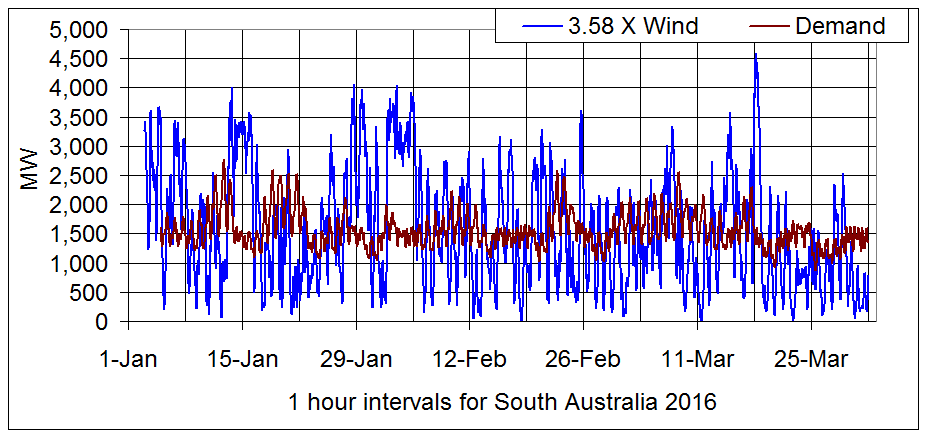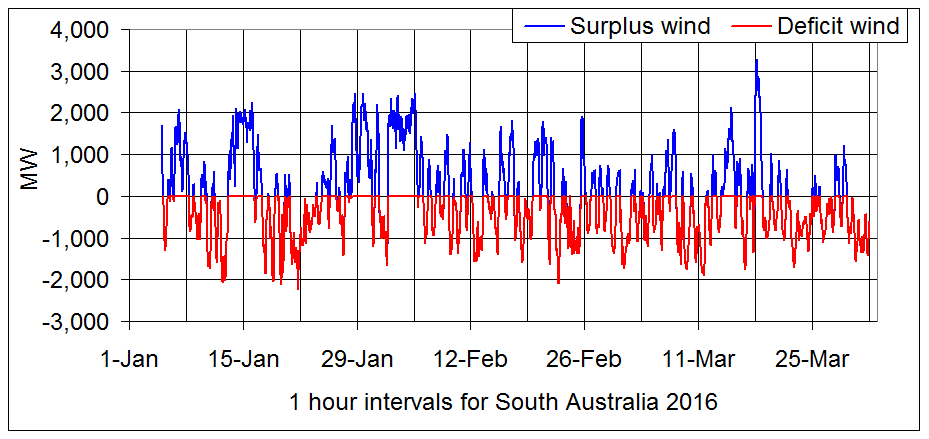With $90 billion spent on batteries and 4,000 MW of more wind farms, South Australia could be a totally renewable state, at least for electricity.
South Australia along with one or two other states has been described by Al Gore as the canary in the coal mine for climate change and renewable energy. This interesting comparison was rewarded by South Australia putting the canary in the dark as there was no coal. But it would be interesting to see what the electricity supply of South Australia might be like with zero CO2 emissions as is the fond wish of many and even of learned societies.
There are many combinations of renewables that could be considered with wind, solar, biomass, pumped storage and various storage technologies. The following is the simplest, combining wind farms and batteries.
Advertisement
The starting point for this analysis is the dominance of wind power in South Australia. To expand this renewable source we must add battery storage as there are no present alternatives. The present 1575 MW of wind farms meets some 35% of demand and expanding this to give an average 100% of supply. We must store the surplus and use that when the wind falls away. The performance of the present demand and wind farms supply is sampled from AEMO data for 3 January to 31 March 2016.
So wind farm output is increased by 358% to 5644 MW, an additional 4069 MW of wind farms, so that the average over 3 months equals the average demand. This is presented in Figure 1 and shows periods of surplus and deficit of supply.

Figure 1:Variations of demand in South Australia for January to March 2016 and 358% increased wind farm supply. (Source AEMO)
The total surplus is equal to the total deficit and the detail is shown in Figure 2. There are periods for example 17 to 24 January 2016 where the average deficit is 750 MW for 168 hours, a total of 125,000 MWh. This is a measure of the energy storage that is needed from the surplus energy of the period 13 to 17 January. For the year 2016 the demand in South Australia was 14,400 GWh so the storage need is of the order of 1% of the demand for the year.

Advertisement
Figure 2:Variations of surplus and deficit from wind farm supply compared to demand for January to March 2016
The variations in storage needs are shown in Figure 3. The maximum storage need is defined as the value necessary to satisfy demand at all times. This is a value of 270 GWh (270,000 MWh) for the period analysed. This is 2% of the annual demand for electricity in South Australia.

Discuss in our Forums
See what other readers are saying about this article!
Click here to read & post comments.
29 posts so far.